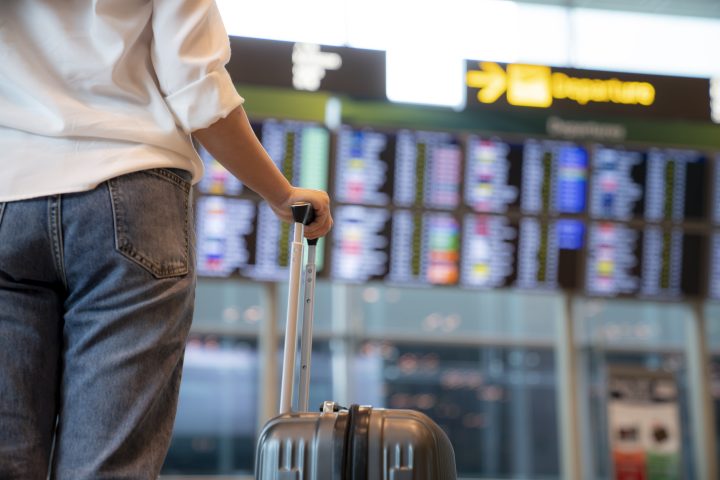
It’s a turbulent time to travel with wildfires continuing to rage in areas of Canada and Europe and hurricanes beginning to wreak havoc in what’s expected to be an active season.
As uncertainty swirls around natural disasters at home and abroad on top of another potential COVID-19 wave looming, the demand for travel insurance is soaring high, experts say.
“More than ever, the importance of a cancellation, interruption insurance is paramount in people’s minds now when they’re planning their trips because they don’t know what tomorrow brings — and it’s been a crazy season,” said Martin Firestone, a travel insurance broker in Toronto and president of Travel Secure Inc.
A record wildfire season has already disrupted many tourism businesses in Canada during the busy summer travel season.
In Europe, Greece has also for weeks been battling blazes that have killed more than 20 people and forced thousands to evacuate.
Meanwhile, in the U.S., Hurricane Idalia left a trail of destruction in Florida after making landfall and bringing a “catastrophic storm surge” on Wednesday.
TuGo, a Canadian travel insurance company, told Global News it hasn’t seen any “obvious spikes” in demand due to natural disasters specifically this year, but more people are interested now than they were before COVID-19 started.
“Travellers are purchasing coverage more than before the pandemic because they are now aware of the need for travel insurance due to COVID illnesses, flight cancellations and delays,” said Brad Dance, chief customer officer at TuGo, in an emailed response.
Typically, travel insurance covers claims arising from “sudden and unexpected situations” that include accidents and emergencies, according to RBC Insurance.
There are no travel insurance packages sold specifically for weather-related events, but many companies have clauses that consider natural disasters as part of their cancellation and insurance policy, Firestone said.
“There is no specific policy that simply says if you encounter bad weather or floods or forest fires, that your claim will be paid,” he told Global News in an interview. “That is one of the contractual conditions listed in the full policy of cancellation and interruption.”
TuGo’s trip cancellation and trip interruption policy reimburses non-refundable, non-recoverable prepaid travel costs.
And it covers a wide range of natural disasters like earthquakes, tsunamis, hurricanes, tornadoes, cyclones, snowstorms, floods, wildfires and volcanic eruptions.
That means if you have to cancel or cut short a trip because of any of the above reasons, then you might be able to file an insurance claim.
But when the insurance is purchased could make a big difference in what can or cannot be claimed.
Trips that are booked to a destination with a known risk won’t be covered, said TuGo’s Dance.
“Coverage would not be provided if at the time of purchasing the insurance, the event existed and there was an imminent threat that could lead to cancellation or interruption of the trip,” he said.
One such example is for those in an area impacted by wildfires who were forced to cancel a trip due to the fires. When the insurance was bought can make all the difference.
For Manulife customers, if a trip cancellation and interruption policy was bought after May 6, 2023, then they will not be covered for wildfire-related disruptions because the fires would “be considered a known risk at that time.” That policy applies whether you’ve been forced to evacuate your home and need to skip your trip, or a pre-booked accommodation impacted became uninhabitable, the company states.
May 6 was when Alberta became the first Canadian province to declare a state of emergency due to the wildfire season this year.
A government-issued travel advisory is also a “triggering” factor for insurance coverage, said Firestone.
However, not all advisories make the cut. Primarily, those that suggest major concern for Canadians — referred to as Level 3 or Level 4 advisories — can have implications for travel insurance coverage, Dance added.
The government of Canada issued a Level 3 travel advisory on Tuesday for the west coast of Florida due to the threat of Hurricane Idalia, urging Canadians to “avoid non-essential travel” to the Big Bend region.
So, all those travellers who booked a trip or departed to the storm-hit area after the advisory was issued will not be covered under TuGo’s trip cancellation and interruption policy or the emergency medical insurance.
But coverage will be provided if the trip was booked and insured — whichever comes later — before the travel advisory was issued.
While the cost of getting travel insurance can vary, as a rule of thumb, a policy is priced at roughly seven to eight per cent of the total sum you want insured, Firestone said.
So, if your trip is priced at $10,000, it will cost $700 to $800 to fully insure that.
Firestone said it’s worth spending the extra dollars that could end up saving travellers much more than they spend.
“I think it’s almost imperative that any trip you purchase that has a significant amount of money that is non-refundable, … you have to insure it. Otherwise you could be out a lot of money.”
However, with climate change making extreme weather events more frequent and destructive, travellers may have to pay more to get insured.
Dance said TuGo’s products on offer to travellers have not changed since 2020 with regards to natural disasters or unforeseen events.
But, Firestone said if insurance companies see tremendous growth in travel insurance claims related to weather, they might start considering upping those costs.
“When risk rises, so do premiums,” he said.
“The amount of fires, the amount of floods, the amount of hurricanes and other weather-related issues have increased dramatically and with that could come a growth and a premium increase at that point.”
[ad_2]You can read more of the news on source
 Travelsmart
Travelsmart



